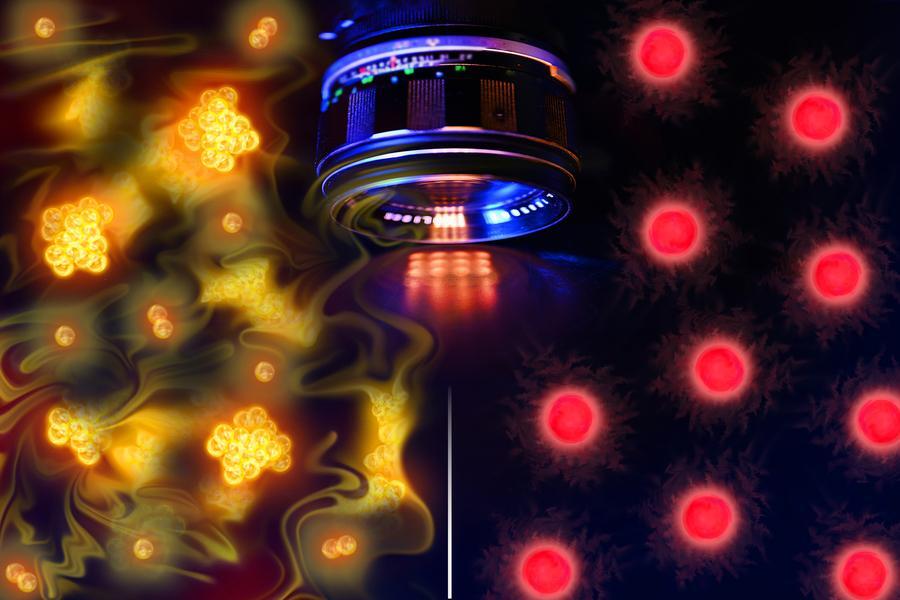
First Images of Atoms Interacting in Free Space Released
Imagine being able to visualize the intricate dance of individual atoms as they interact with each other in the vast expanse of free space. For decades, scientists have been studying these interactions, but without the ability to see them, our understanding of quantum mechanics has been limited to theoretical models and simulations. However, a team of physicists from Massachusetts Institute of Technology (MIT) has made a groundbreaking breakthrough, capturing the first images of individual atoms freely interacting in space. This achievement has the potential to revolutionize our understanding of quantum phenomena and has been published in the journal Physical Review Letters.
The researchers, led by Professor Markus Greiner, used a cutting-edge technique called “quantum gas microscopy” to produce high-resolution images of bosons and fermions, the two major families of quantum particles. By trapping a few hundred atoms in a highly controlled environment, the team was able to observe the interactions between these particles in real space, providing a visual representation of the quantum world that was previously inaccessible.
The ability to visualize these interactions has far-reaching implications for our understanding of quantum mechanics. For instance, the team’s findings could help scientists better understand the behavior of superconductors, which are materials that can conduct electricity with zero resistance. This could lead to the development of more efficient and powerful technologies, such as advanced power grids and energy storage systems.
Furthermore, the ability to observe individual atoms interacting in free space could also shed light on the mysteries of quantum entanglement, a phenomenon in which particles become connected and can affect each other even when separated by vast distances. This could lead to a deeper understanding of the fundamental nature of reality and the development of new technologies, such as quantum computers and secure communication networks.
The MIT team’s achievement is a testament to the power of human curiosity and the importance of basic scientific research. By pushing the boundaries of what is thought to be possible, scientists can unlock new insights and discoveries that have the potential to transform our understanding of the world and improve our daily lives.
The process of capturing these images was not without its challenges. The team had to develop a sophisticated experimental setup that could trap and manipulate the atoms with precision and control. They used a combination of lasers and magnetic fields to create a “trap” that could confine the atoms in a small volume, allowing them to observe their interactions in detail.
The team also had to develop new imaging techniques to capture the images of the atoms. They used a technique called “fluorescence imaging,” which involves exciting the atoms with a laser and then measuring the light that they emit. This allowed them to create high-resolution images of the atoms with unprecedented detail.
The results of the team’s research are nothing short of breathtaking. The images they captured show individual atoms interacting with each other in a way that is both beautiful and fascinating. The team’s findings have the potential to revolutionize our understanding of quantum mechanics and have far-reaching implications for a wide range of fields, from materials science to quantum computing.
As Professor Greiner noted in a statement, “This achievement has the potential to help scientists visualize never-before-seen quantum phenomena in real space. We’re excited to see where this research takes us and what new insights it may bring.”
The team’s research was published in the journal Physical Review Letters and was funded by the National Science Foundation and the Army Research Office. The findings have been hailed as a major breakthrough in the field of quantum mechanics and have the potential to transform our understanding of the quantum world.
In conclusion, the release of the first images of atoms interacting in free space is a major milestone in the field of quantum mechanics. The MIT team’s achievement has the potential to revolutionize our understanding of the quantum world and has far-reaching implications for a wide range of fields. As scientists continue to push the boundaries of what is thought to be possible, we can expect even more exciting discoveries and breakthroughs in the years to come.
Source:
https://news.mit.edu/2025/mit-physicists-snap-first-images-free-range-atoms-0505






